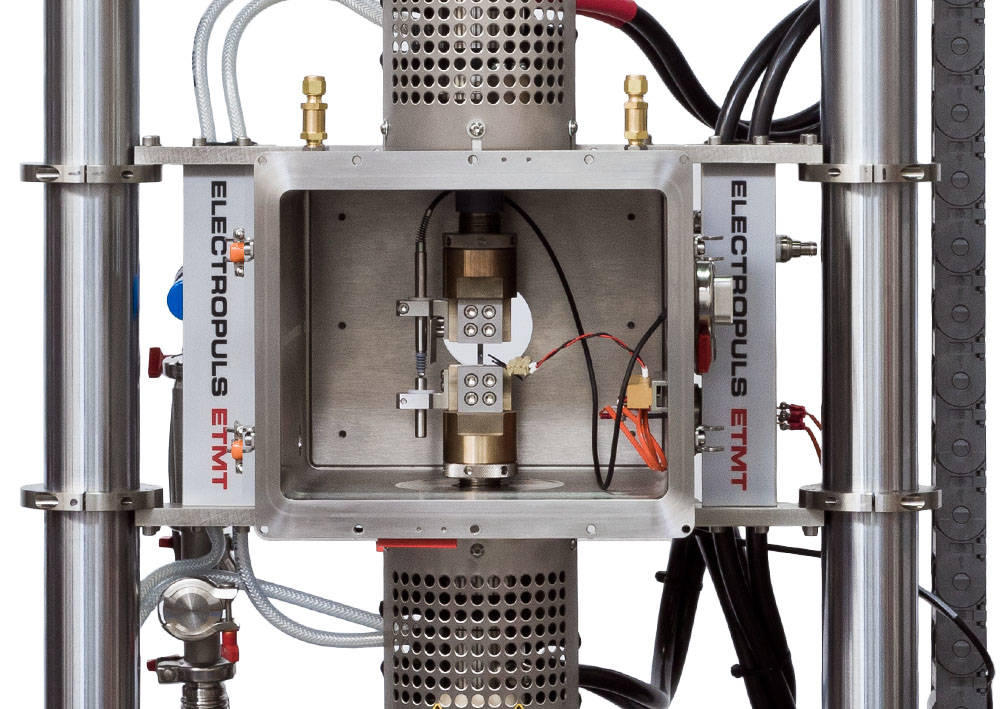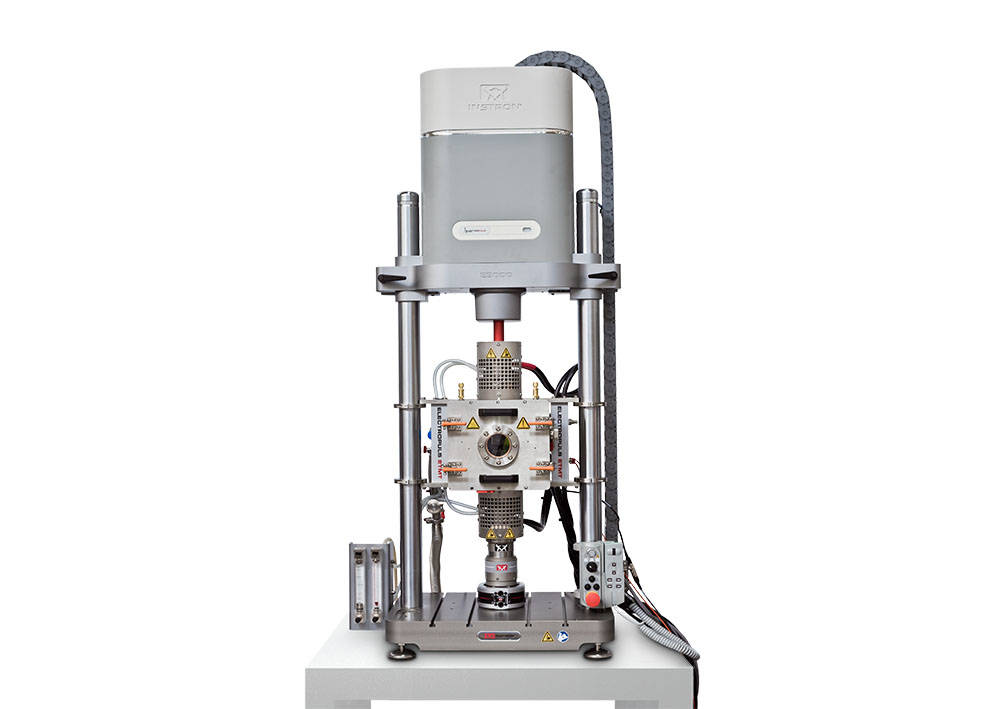Testing of high-temperature alloys has been notoriously difficult, they are often expensive, consist of rare materials and are extremely difficult to machine. Seeing the need for a corresponding testing machine that can accurately characterize their material properties, Instron has developed the original concept of an Electro-Thermal Mechanical Testing System (ETMT) in conjunction with National Physical Laboratory (NPL) over 10 years ago and has now brought the ETMT onto the ElectroPuls platform, offering an integrated ETMT system that is designed to test miniaturized test piece at elevated temperature.
Over the last 10 years, users of Instron ETMT have made great progress into exploring its applications further and developed new test methods that utilize the unique features of the ETMT, while providing feedback to Instron for innovation of new features. Understanding how material properties of miniaturized test piece will translate to a real size sample is of utmost importance in validating the data generated by the ETMTs. In light of that, a good practice guide has been produced for the ETMT systems that shed light onto the investigations ETMT users have conducted and how they impact ETMT’s prospective users, making ETMT more accessible to new users.
Why choose Instron?
The Instron ETMT system is a highly configurable system and can be customized to suit many applications. The Instron ETMT system can measure a range of physical and mechanical properties, including tensile, compression, creep, low cycle fatigue (LCF) and thermomechanical fatigue (TMF) properties of materials. In addition, it has determined resistivity, thermal expansion coefficients and phase transformations in a variety of materials including steels, titanium alloys and intermetallic alloys.
Instron ETMT system offers a competitive alternative to traditional hydraulic machines for testing miniature specimens in materials such as nickel-based super-alloys, hard metals (e.g. tungsten carbide) and lead-free solders. Instron ETMT system’s use of miniaturized test piece has helped shorten development cycles of new alloys and test the remnant life of used components, minimizing running cost and investigating component lifespan.
Benefits
- Testing of miniaturized specimen opens the opportunity to cost saving and testing methods that are far less efficient with other machines, including property distributions in heterogeneous materials and testing in controlled atmospheres or vacuum
- Fast and accurate direct resistance heating and water cooling of fixtures controlled by the ETMT control unit, with specimen heating and cooling rates of up to 200°C/s and 100°C/s respectively, and a maximum specimen temperature of up to 1500°C
- Multiple strain measurement options, including high precision twin LVDT, extended ceramic high-temperature extensometer and digital image correlation (DIC) techniques
- Centralized 19'' rack-mounted control unit, offering an integrated solution to all controls and data acquisition of the system, with good visual access to test piece for DIC opportunities
- Accommodates both round and flat specimens with the same fixture, with the option of steel or brass fixture for different thermal and electrical conductivity
- AlignPRO mechanical fixture paired with its software allows accurate horizontal, vertical and angular alignment of the test piece, which is especially important in miniaturized testing

